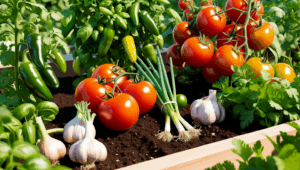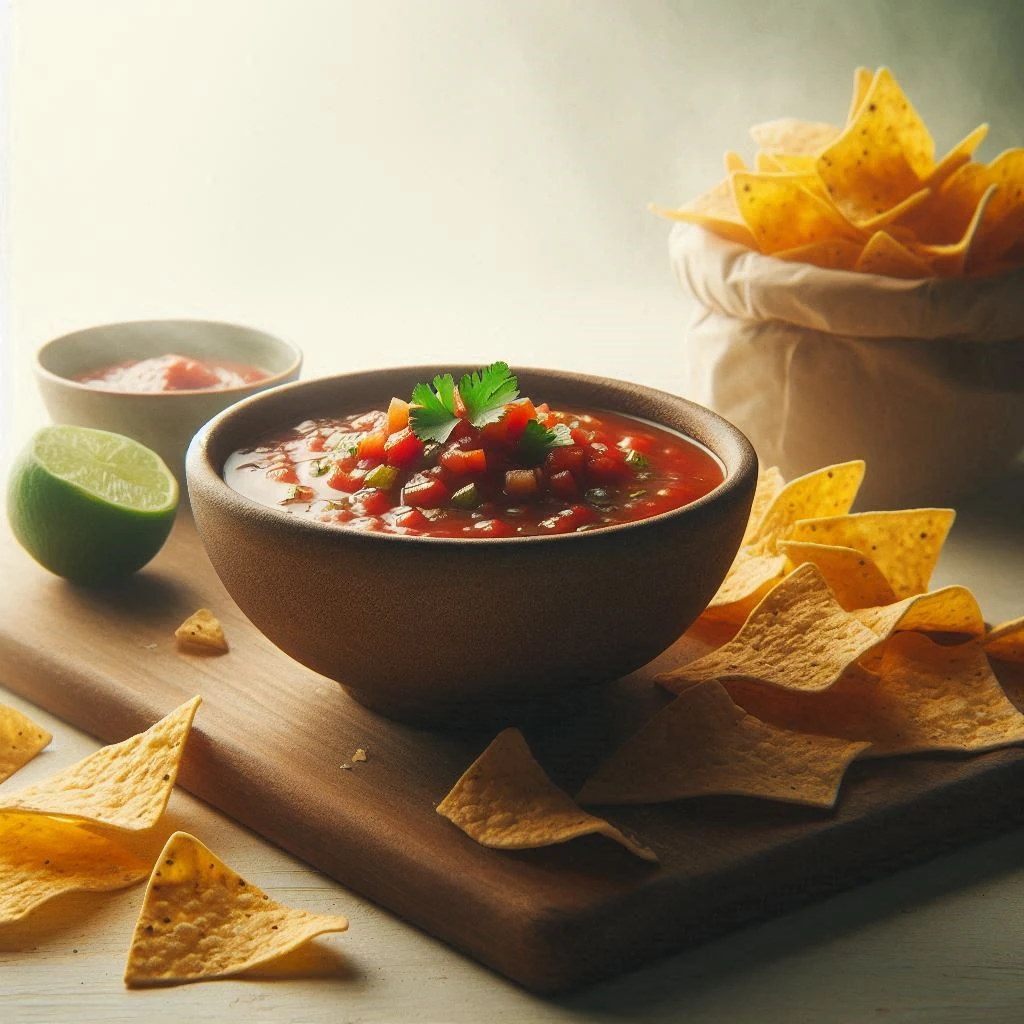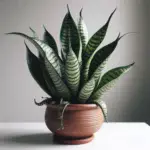Grow Your Own Salsa Ingredients: A Flavorful Garden Adventure
Grow your own salsa ingredients, from tomatoes and peppers to cilantro, garlic, and onions—it’s a tasty journey. And the payoff comes with every bite.
Just like crafting the perfect dish, it all begins with the right ingredients. And when it comes to salsa, freshness is everything.
The more vibrant and flavorful your produce, the better your salsa will be. For that bold, zesty kick everyone loves, nothing beats the taste of ingredients picked fresh from your garden. It’s not only satisfying—it’s packed with unbeatable flavor.
🍅 Tomatoes: The Heart of Salsa
Tomatoes are the base of any great salsa. If you want a thick, rich consistency, paste tomatoes like Roma or San Marzano are your best bet. They’re dense, flavorful, and ideal for salsa-making.
Want to add extra juiciness? Mix in some slicing tomatoes. This combination gives your salsa a balance of texture and a little more drip—perfect for dipping or spooning onto tacos.
🌶️ Peppers: Sweet or Spicy—You Choose
Peppers bring the heat—or the sweet. Whether you prefer bell peppers for a mild flavor or want to fire things up with jalapeños, cayenne, or habaneros, there’s a pepper for every taste.
The best part? Peppers don’t need much space, so you can grow several varieties. For a unique twist, try planting habaneros alongside jalapeños. The cross-pollination can result in slightly milder habaneros and spicier jalapeños!
🧅 Onions & Garlic: Your Salsa Garden’s Bold Backbone
No salsa is complete without onions and garlic. These two pack a punch and round out your garden-grown flavors.
-
Onions love sunlight and rich soil, and they can be planted early since they tolerate cooler temperatures.
-
Garlic thrives when planted in the fall and harvested in summer. It’s a long game, but well worth it for the flavor.
🌿 Herbs: Fresh Flavor Boosters
Your salsa garden wouldn’t be complete without herbs. These aromatic additions elevate your salsa from good to unforgettable:
-
Cilantro is a salsa classic—and bonus, it self-seeds, giving you fresh leaves throughout the season.
-
Basil adds a sweet, peppery fragrance and also pairs beautifully with tomatoes.
-
Oregano is a hardy perennial that comes back year after year.
-
Parsley offers vibrant green leaves for two full years if well cared for.
Discover the “Best Herbs to Grow in Pots”
🌶 The Classic Salsa Combo
Wondering what to grow first? Start with this winning combination: tomatoes, peppers, onions, garlic, and herbs. These ingredients form the foundation of any delicious homemade salsa.
When you grow them yourself, you’re guaranteed freshness, flavor, and that unbeatable homemade taste. It’s the perfect garden project for beginners and seasoned growers alike.
Planning and Planting Your Ideal Salsa Garden

Designing your salsa garden is where the magic begins. Think of it as painting with plants—each one brings its own color, flavor, and purpose to the canvas. The goal? Give every salsa ingredient a prime spot to shine.
🌞 Sun-Loving Superstars
Tomatoes, peppers, basil, and oregano are sun worshippers. These plants thrive in full sun, so place them where they’ll get at least 6–8 hours of direct light each day. A southern-facing edge of your garden is ideal. That prime spot helps basil release its fragrant oils and keeps your tomatoes and peppers producing like champs. Bonus tip: plant basil near tomatoes—they’re a classic companion duo that benefits both plants!
🌿 Partial Shade Performers
Some herbs and bulbs like a little break from the heat. Onions, garlic, cilantro, and parsley prefer partial shade—especially during the peak of summer. Tuck them into spots with a little relief from the afternoon sun, like behind taller plants or near a fence line. Garlic is a cool-season crop, so plant it in the fall to let it overwinter and get a jumpstart come spring.
🪴 Growing Options for Any Space
Short on space? No problem. Raised beds and containers are excellent solutions for compact areas. They improve drainage, warm up faster in spring, and let you control your soil. Just be sure your containers have drainage holes—and don’t forget to rotate your crops. Especially tomatoes: switch up their location every couple of years to prevent soil-borne diseases.
As mentioned earlier, go for paste tomato varieties like Roma or San Marzano when planning your layout. These tomatoes deliver that rich, thick texture every great salsa needs, locking in all those bold, zesty flavors.
🌿 Essential Tips to Keep Your Salsa Garden Thriving
When you grow your own salsa ingredients, you’re not just planting a garden—you’re building your own little flavor factory. And honestly, keeping it thriving isn’t as tricky as it sounds. With a few easy habits, you’ll have fresh, zesty ingredients right outside your door.
Water wisely. Your plants love moisture, but they don’t want to live in a swamp. Aim to keep the soil like a wrung-out sponge—nice and damp, but not soaked. This helps roots stay happy and healthy.
Feed your plants. Think of fertilizer or compost as a garden smoothie. A good mix of nutrients gives your salsa stars the fuel they need to grow strong, fast, and flavorful.
Fight pests naturally. No one invites bugs to the salsa party! Companion planting is a game-changer here. Plant basil next to your tomatoes and peppers—it smells great and keeps those annoying pests away.
Give tomatoes some backup. Tomatoes are ambitious little climbers. Help them out with a cage, trellis, or some sturdy stakes. Supporting your plants means better air circulation, fewer diseases, and way more tomatoes for your salsa.
Growing your own salsa ingredients isn’t just about gardening—it’s about creating fresh, bold flavors you can taste with every bite. Keep it simple, stay consistent, and soon your salsa garden will be bursting with life—and ready to spice up your table!
How To Grow A Salsa Garden Using Companion Planting & Pollinator Friendly Plants
🍅 Harvesting and Preparing Your Homemade Salsa
Harvest time is the best part of the journey when you grow your own salsa ingredients. It’s when all your care and hard work pay off in vibrant, flavorful produce ready for your kitchen.
When your tomatoes are showing rich colors and feel slightly soft to the touch, they’re ready for picking. Their natural sweetness at peak ripeness will take your homemade salsa to the next level.
For peppers, it’s all about personal taste. Whether you prefer the mellow crunch of bell peppers or the fiery heat of a habanero, harvesting at the right color and size locks in maximum flavor. Sample carefully if you’re chasing that perfect spicy kick!
Your herbs are the finishing touch. Snip cilantro early—before it bolts and sends up seeds that add unwanted bitterness. Basil, parsley, and oregano can be harvested regularly, keeping your salsa fresh and aromatic with every batch.
(Fun tip: if you let cilantro go to seed, you’ll harvest coriander—another great flavor boost for salsas!)
As for garlic and onions, once pulled, they’ll need a cool, dry place to cure and store. With the right storage, you’ll have these flavor builders ready long after the main growing season ends.
For a little extra flair, many gardeners like to add a “secret ingredient” to their salsa. A splash of fresh lime juice can brighten the whole bowl, while a pinch of sugar or a dash of vinegar can balance out bold, spicy flavors. Don’t be afraid to experiment—your garden-grown salsa deserves a personal twist!
So grab your fresh harvest, slice it up, mix it together, and dig in. Whether you like it mild or mouth-on-fire hot, nothing beats the unbeatable taste of salsa made from ingredients you grew yourself.
Happy Gardening—and even happier snacking! 🌶️🍅
This post contains the following Affiliate Links.
See Gardeners Supply Company for All Your Gardening Needs!





-Just got done reading your article, $$
-I must say that the combination of onions, garlic, tomatoes, herbs, and peppers is something that really helps me to understand the foundation of salsas and how to make them; typically, we used to (and still do) grow some of the peppers in our garden, but to each their own, in this situation.
-Another tip that I found helpful was that onions, garlic, and herbs in general prefer the shade with garlic even being able to remain “snug” during the winter time; tomatoes, basils and such should still be exposed to the sun like normal.
-Basil is a pest deterrent when planted along with tomatoes and peppers; this is one benefit of companion planting.
-I personally prefer more spice, which, in this case, probably means I’m leaning toward(s) habanero pepper(s) for that; in which case, careful picking once the desired color/heat level is achieved is essential to experiencing the desired flavor.
-Overall, a good article; will be looking for more tips like this.
-Best,
ALEJANDRO G.
Thanks Alejandro, much appreciated!!